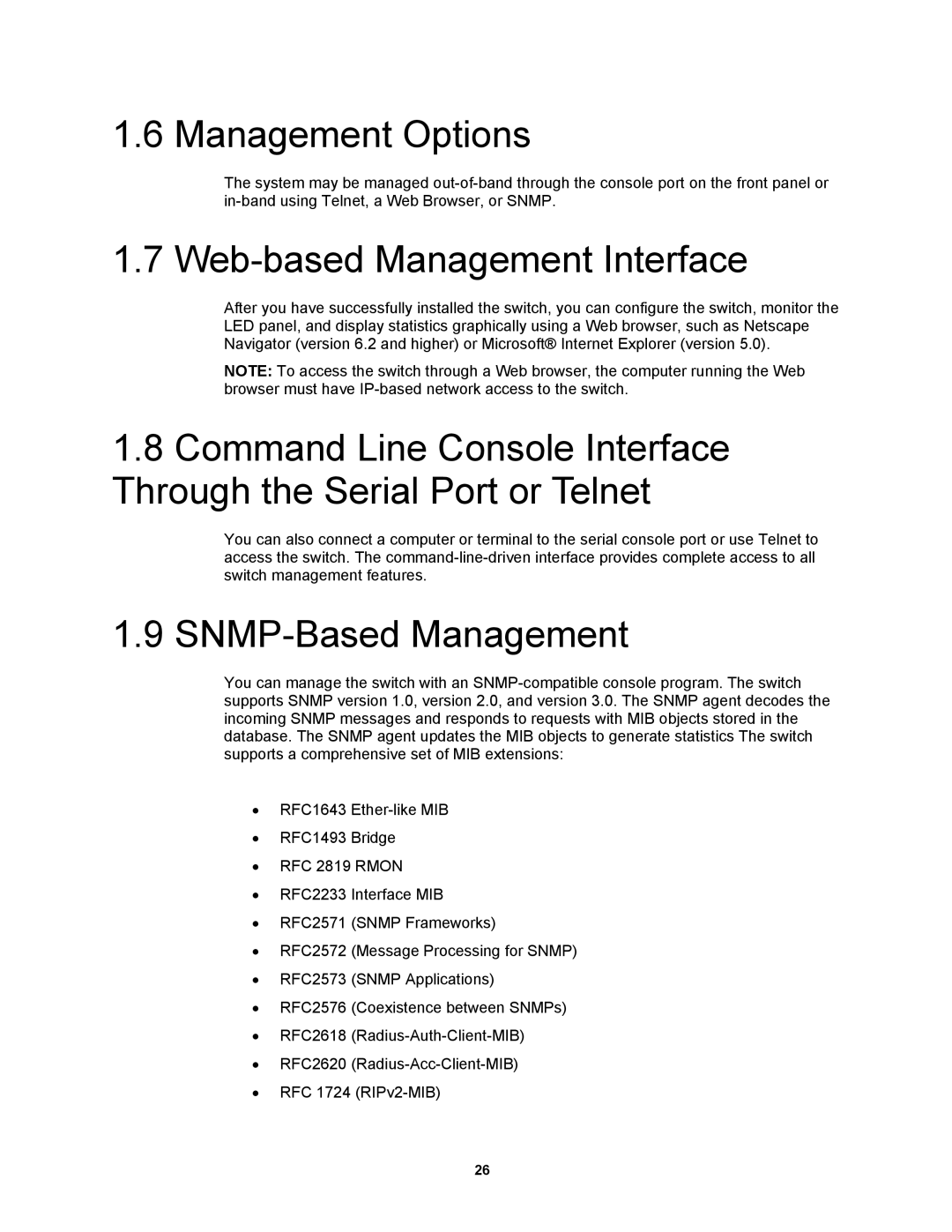1.6 Management Options
The system may be managed
1.7 Web-based Management Interface
After you have successfully installed the switch, you can configure the switch, monitor the LED panel, and display statistics graphically using a Web browser, such as Netscape Navigator (version 6.2 and higher) or Microsoft® Internet Explorer (version 5.0).
NOTE: To access the switch through a Web browser, the computer running the Web browser must have
1.8Command Line Console Interface Through the Serial Port or Telnet
You can also connect a computer or terminal to the serial console port or use Telnet to access the switch. The
1.9 SNMP-Based Management
You can manage the switch with an
•RFC1643
•RFC1493 Bridge
•RFC 2819 RMON
•RFC2233 Interface MIB
•RFC2571 (SNMP Frameworks)
•RFC2572 (Message Processing for SNMP)
•RFC2573 (SNMP Applications)
•RFC2576 (Coexistence between SNMPs)
•RFC2618
•RFC2620
•RFC 1724
26
